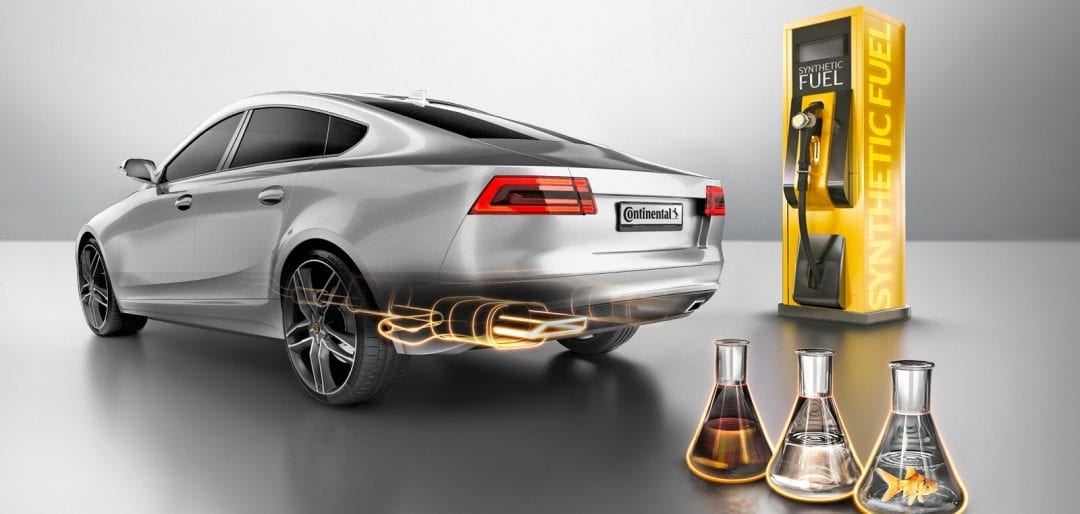Synthetic fuels, the production and burning of which is CO2-neutral, have the potential to make combustion drives more environmentally friendly. Continental has now successfully conducted tests on a synthetic fuel called oxymethylene ether (OME) in test vehicles. This includes the Super Clean Electrified Diesel vehicle presented this year, which operates even more cleanly using an OME admixture. An interesting aspect in the light of the current diesel scandal.
According to Continental, the road tests have confirmed that diesel fuel containing 15 % OME admixture for current diesel engines is already a technically safe and viable possibility for reducing greenhouse gas emissions. This is possible because CO2 generated as exhaust gas in power stations or steel works can be used in the production of OME. This intelligent linking of energy management, chemistry and automotive sectors enables synthetic fuels such as OME to create a clean bridging technology on the road toward pure electric mobility.
“Synthetic fuels do not only contribute to CO2-neutral mobility. For instance, OME produces almost no soot when burned,” said Dr. Oliver Maiwald, head of Technology & Innovation at the Powertrain division. “Continental is therefore actively promoting vehicle technology for the use of synthetic fuels. Our objective is to create a transition phase in which normal driving does not contribute to climate change. We have made most progress with OME for diesel applications.
The economical production of synthetic fuels is one of the central challenges in this field. This means that the process technology for manufacturing OME on an industrial scale is still in development. “It is therefore pragmatic to assume a gradual introduction of OME. With this in mind, we have now carried out an initial test of diesel containing OME,” says Dr. Gerd Rösel, head of Advanced Engineering at Engine Systems business unit, Powertrain division. “Our vehicle tests have shown that a 15 % OME admixture in diesel fuel – in addition to the current 7 % of biofuel – is already usable in engines today.”
Every fuel has specific characteristics, according to which an engine and all of its components must be designed. This means that the use of OME in engines has an effect on the entire process chain from the injection system and combustion through to the composition of raw emissions, exhaust-gas aftertreatment, sensor technology and diagnostics. For this reason it is necessary to prepare basic research into the corresponding technologies for gradually increasing the percentage of OME.
“In order to use higher concentrations of OME in diesel, we need to consider the entire reaction pathway,” says Rolf Brück, head of the Catalytic Converters product line in the Fuel & Exhaust Management business unit of the Powertrain division. “With its end-to-end expertise from injection molding to exhaust-gas aftertreatment including SCR, Continental is optimally positioned for this.”

















